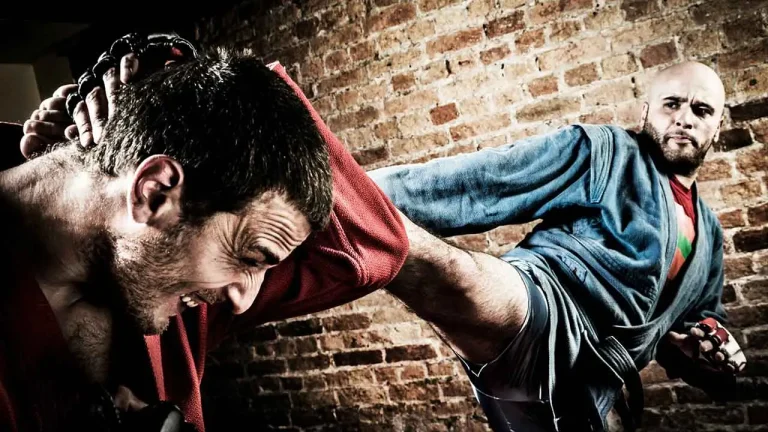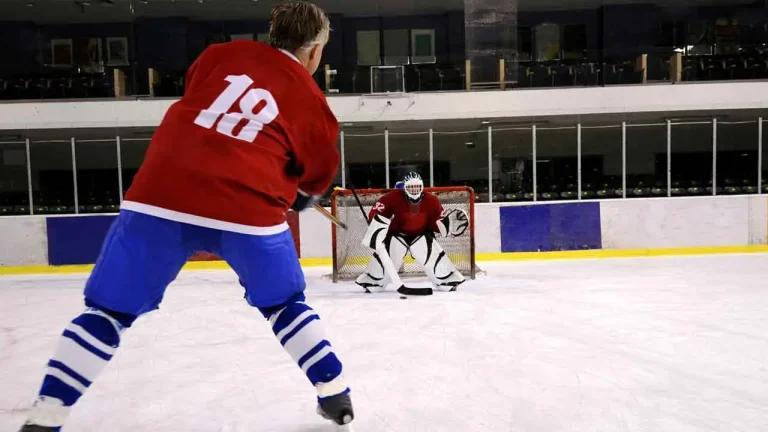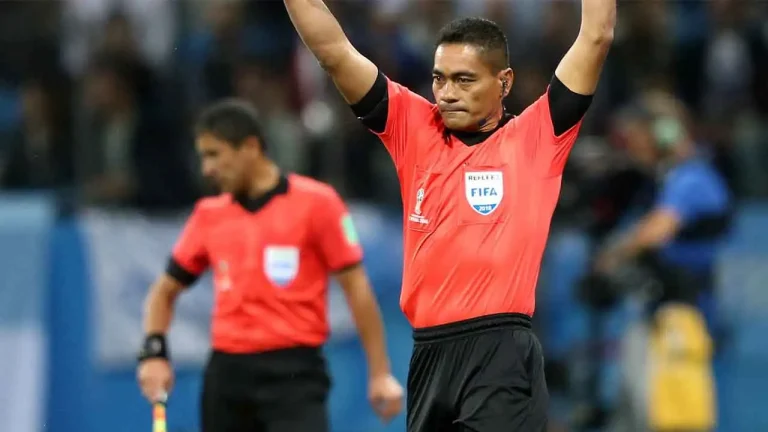Explaining CDM Soccer Position – Which Player is the Best Central Defensive Midfielder?

What Is The CDM Soccer Position? Good CDM Soccer Qualities
Unleashing the power of midfield mastery, the CDM soccer position takes center stage in every game. While forwards and goalkeepers might steal the headlines with their flashy goals and acrobatic saves, it’s the unsung hero in the middle that keeps teams ticking like a well-oiled machine. But what exactly does CDM mean in soccer? And what role does this enigmatic position play on the field? Join us as we dive deep into the world of Central Defensive Midfielders – those guardians of defense and architects of attack. Get ready to discover why they are truly some of the best players ever to grace the beautiful game!
CDM Soccer Position
CDM, or Central Defensive Midfielder, is a position in soccer that holds immense importance for any team. Positioned just in front of the defense, this player acts as a shield, intercepting attacks and breaking down opposition plays. They are the backbone of the team’s defensive structure and play a pivotal role in transitioning from defense to attack.
The CDM’s primary responsibility is to communicate effectively with both the defense and the attacking players. This ensures smooth coordination between different areas of the field. By constantly providing instructions and organizing their teammates, they help maintain defensive solidity while also initiating quick counter-attacks.
One of the most noticeable impacts I’ve seen CDMs make in games is their ability to disrupt opponents’ passing lanes. With exceptional anticipation skills, they read plays ahead of time and make timely interceptions or tackles to regain possession for their team. Their game-reading abilities allow them to anticipate moves before they happen.
In addition to their defensive duties, CDMs also contribute significantly in supporting defenders during intense situations. They provide cover when full-backs advance on overlapping runs or trackback quickly if an opponent bypasses the defense line.
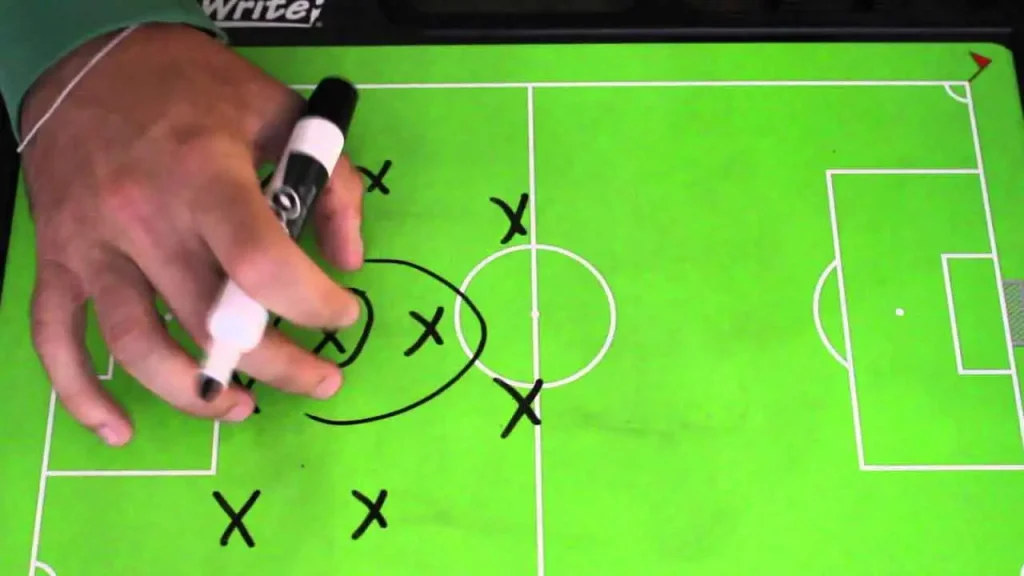
Physical fitness plays a significant role too; stamina determines how long these players can maintain high-intensity performance throughout matches without compromising concentration levels. A good CDM needs endurance combined with controlled aggression – knowing when best to apply pressure without overcommitting defensively. Being successful as a Central Defensive Midfielder requires not only technical prowess but also excellent decision-making abilities under pressure.
CDM Means in Soccer
CDM stands for Central Defensive Midfielder, and it is a crucial position in soccer that often goes unnoticed. This player operates in the center of the field, acting as a shield for the defense while also providing support to the attack.
The CDM’s primary role is to break up opposition plays and disrupt their attacking rhythm. They are responsible for intercepting passes, making tackles, and applying pressure on opponents when necessary. Their presence adds an extra layer of protection to the backline.
In addition to defensive duties, the CDM also plays a vital role in transitioning from defense to attack. They act as a link between the defensive line and midfielders or forwards, distributing accurate passes and initiating counter-attacks.
So next time you’re watching a match or playing FIFA with your friends remember how influential these unsung heroes called Central Defensive Midfielders truly are! Stay tuned because we will now explore some legendary players who have excelled in this position over time!
Role Of the CDM On the Soccer Field
The role of the central defensive midfielder (CDM) is crucial in the soccer field. This position acts as a bridge between the defense and the attack, providing stability and support to both areas of the team. The CDM plays a pivotal role in maintaining team shape, organizing the defense, and initiating attacks.
One of the primary responsibilities of a CDM is communication. They must effectively communicate with both their fellow defenders and attacking players to ensure everyone is on the same page. By constantly relaying information about opponent positioning or potential threats, they help maintain defensive solidity while also aiding in offensive transitions.

In terms of defensive duties, CDMs are tasked with breaking up opposition attacks through well-timed tackles and interceptions. Their physical presence allows them to win back possession for their team and disrupt opponents’ game plans.
Communication With the Defense and Attack
Communication is vital in any team sport, and soccer is no exception. As a central defensive midfielder (CDM), one of the key responsibilities is to effectively communicate with both the defense and the attack.
In terms of the defense, the CDM acts as a link between the backline and midfield, relaying instructions, organizing positioning, and ensuring everyone is aware of their roles and responsibilities. This communication helps maintain a solid defensive structure and prevents gaps from appearing in the backline.
On the other hand, when it comes to connecting with the attack, communication plays a crucial role in initiating attacks and creating scoring opportunities. The CDM needs to be able to read play quickly, anticipate movements from teammates up front, and provide accurate passes or through balls to unlock defenses.
CDM Impact Seen in Games
The impact I’ve seen in games when it comes to the role of a Central Defensive Midfielder (CDM) is truly remarkable. These players can dictate the flow and tempo of a match, making them an integral part of any team’s success.
One key aspect that stands out is their defensive prowess. CDMs are often tasked with shielding the backline and disrupting opposing attacks. With their strong tackling skills and positioning, they can effectively break up play and regain possession for their team.
Additionally, CDMs play a crucial role in initiating attacking moves from deep positions. Their ability to distribute accurate passes and switch play quickly allows them to set up counter-attacks or find openings in the opposition’s defense.
Furthermore, CDMs excel at reading the game. They possess excellent anticipation skills, allowing them to intercept passes and make crucial interceptions that disrupt opponents’ plans. Watching a skilled CDM dominate games with their defensive prowess while also contributing offensively is truly awe-inspiring. It’s no wonder why some of soccer’s greatest legends have excelled in this position throughout history!
Transition Duties of the CDM
The central defensive midfielder, or CDM, plays a crucial role in transitioning the team from defense to attack. This position requires exceptional tactical awareness and decision-making abilities. The CDM is responsible for initiating counterattacks and distributing the ball efficiently to the attacking players.
One of the main transition duties of a CDM is providing an outlet for defenders under pressure. When the opposing team is pressing high up the field, it’s essential for the CDM to drop deep and offer support to his teammates at the back. By positioning himself intelligently, he can receive passes from defenders and distribute them effectively.
In addition, the CDM must be adept at quickly shifting from defensive responsibilities to offensive contributions. Once possession has been regained, they need to make themselves available as an option for their teammates who are looking to launch attacks. Their ability to read game situations allows them to anticipate turnovers and react swiftly.
Furthermore, when winning back possession in midfield areas, a skilled CDM will immediately look forward with accurate long-range passes or precise through balls that bypass opponents’ lines of defense. This helps create opportunities for forwards by exploiting spaces left behind by retreating defenders. To sum up, understanding how vital this role is during transitional phases can greatly impact a team’s performance on match day!
A Good CDM Soccer Best Qualities on the Field
A good central defensive midfielder (CDM) possesses a unique set of qualities that make them an invaluable asset on the field. First and foremost, tackling is a crucial skill for CDMs. Their ability to win back possession and disrupt opponents’ attacks is vital in maintaining defensive stability.
Supporting defenders is another key aspect of a CDM’s role. They must be able to read the game well and provide cover for their teammates when they venture forward. This requires excellent positioning and anticipation skills. the qualities mentioned below define what makes a good central defensive midfielder on the soccer field.
Tackling
Tackling is a crucial skill for any central defensive midfielder in soccer. It involves the ability to cleanly and effectively win possession of the ball from an opponent. A good CDM must be able to time their tackles perfectly, knowing when to commit and when to hold back.
A successful tackle can completely disrupt the opposition’s attack and provide a chance for a counter-attack by quickly transitioning into offense. Timing is everything – mistimed or reckless tackles can result in fouls, yellow cards, or even penalties for the opposing team.

CDMs who excel at tackling are often known for their tenacity and aggression on the field. However, controlled aggression is essential; they need to balance their physicality with discipline so as not to give away unnecessary free kicks or put their team at risk.
Supporting Defenders
One crucial aspect of the CDM’s role on the soccer field is supporting the defenders. This entails providing cover and protection to the backline, ensuring that any gaps or spaces are closed down effectively. The CDM acts as an extra layer of defense, constantly scanning for potential threats and positioning themselves strategically to provide support.
To excel in this aspect of their role, a good CDM must possess excellent spatial awareness and anticipation skills. They need to read the game well, predicting where attackers might make runs or exploit defensive weaknesses. By doing so, they can intercept passes or make timely tackles to regain possession before any real danger materializes.
Moreover, supporting defenders also involves communication and coordination with teammates at the back. The CDM acts as a bridge between defense and midfield, relaying information about opposition movements and organizing defensive shape during transitions.
Football Passing
Passing is a crucial aspect of the game for any soccer player, but it holds even more significance for a central defensive midfielder (CDM). As a CDM, one needs to have exceptional passing skills to distribute the ball effectively and initiate attacks from deep positions.
The ability to accurately deliver short passes to teammates in tight spaces is essential. A good CDM knows how to keep possession under pressure and create opportunities for their team by finding gaps in the opposition’s defense with precise through balls. They must also be adept at long-range passing, as they often serve as the link between defense and attack.
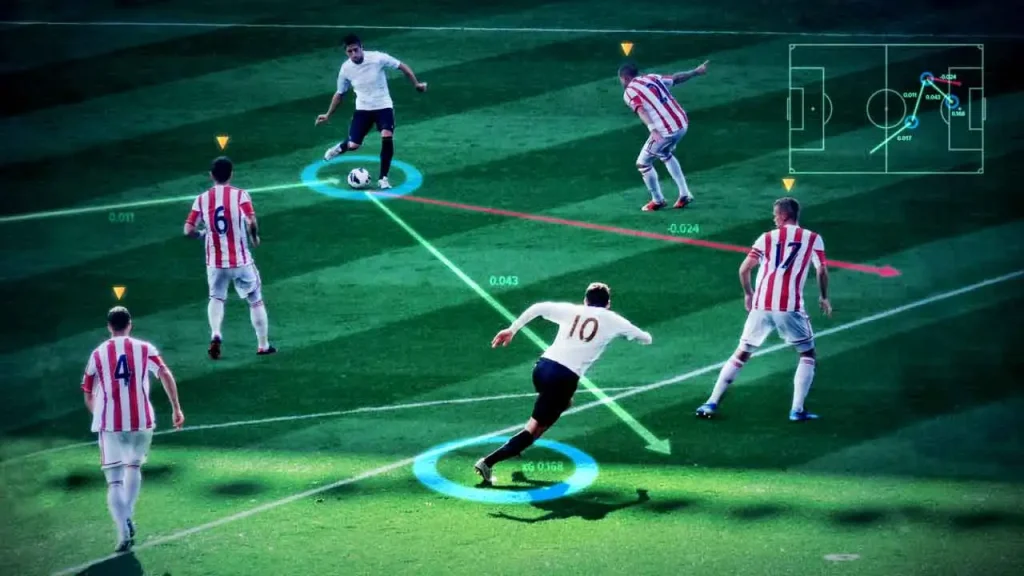
To sum up, passing is an integral skill for any central defensive midfielder looking to excel on the field. It allows them to control the game tempo, spark attacks from deep positions, and contribute significantly both defensively and offensively.
Players Positioning
Positioning is a crucial aspect of the central defensive midfielder’s role on the soccer field. It requires intelligence, awareness, and anticipation to be in the right place at the right time. A good CDM knows how to read the game and position themselves effectively to intercept passes, block shots, and provide support for their teammates.
In terms of defensive positioning, a CDM must constantly assess the movements of opponents’ forwards or attacking midfielders. By reading their body language and anticipating their next move, they can cut off passing lanes or make timely challenges.
On the other hand, when supporting defenders during an opposition attack, a CDM should position themselves strategically between their backline and midfield line. This allows them to provide cover by stepping into passing lanes or pressing opponents without leaving gaps behind them.
Stamina
STAMINA plays a crucial role in the success of a central defensive midfielder (CDM) on the soccer field. This position requires relentless physical effort and endurance throughout the game. CDMs need to cover large distances, constantly tracking back to support the defense and pushing forward to help with attacking plays.
With their tireless running, CDMs act as a link between defense and midfield, providing stability and protection for their team. Their stamina allows them to maintain intense pressure on opponents, disrupting their attacks and forcing turnovers.
A high level of fitness is essential for CDMs as they are often involved in multiple defensive actions such as tackles, interceptions, and headers. They need to be able to sustain these efforts over 90 minutes or more if needed.
Controlled Aggression Keep Focus on the Game
Controlled aggression is a key trait that sets apart great central defensive midfielders (CDMs) on the soccer field. It refers to the ability to be assertive and physical in challenges while maintaining discipline and avoiding reckless behavior. A CDM needs to strike a delicate balance between being aggressive enough to win back possession and protect their team’s defense, but also staying composed and avoiding unnecessary fouls or bookings.
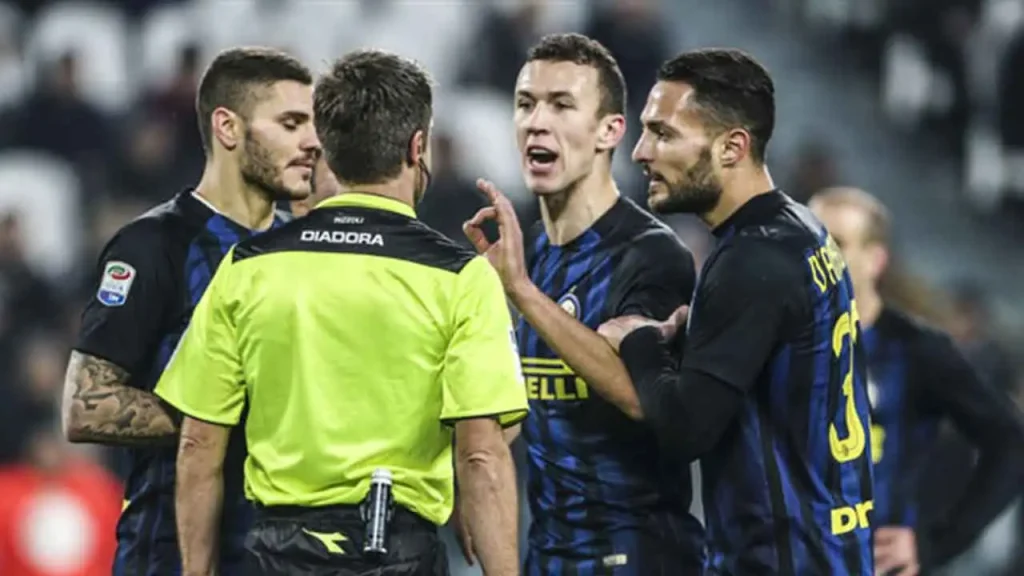
Furthermore, controlled aggression requires mental strength as well. It means keeping emotions in check even during intense moments of the game. This allows CDMs to stay focused on their role in disrupting opponents’ attacks without getting caught up in personal battles or retaliatory actions.
A successful CDM with controlled aggression can effectively disrupt opposition plays and break up attacks without resorting to excessive force or risking disciplinary action from referees. Their ability to read the game enables them not only to anticipate where they need to be defensively but also how best to approach each situation with calculated aggression.
Controlled aggression is an essential characteristic of top-notch CDMs. It showcases their ability as tough competitors and as smart players who understand how best to utilize physicality within the boundaries of fair play! So next time you watch a soccer match, keep your eyes peeled for those midfield enforcers showcasing this skill!
Field Reading Abilities
Game reading abilities are essential for a central defensive midfielder (CDM) in soccer. It’s not just about physical strength and technical skills; it’s also about having the intelligence to anticipate and read the game.
A good CDM has an exceptional ability to analyze the flow of play, understand opponents’ movements, and make quick decisions on when to press or drop back. They must have a keen eye for spotting potential threats and intercepting passes before they become dangerous.
Game reading abilities require constant awareness of both offensive and defensive situations on the field. The best CDMs possess excellent situational awareness, allowing them to provide crucial support in both the defense and attack phases of play.
Anticipating & Intercepting
Anticipating and intercepting are 2 key skills that make a great central defensive midfielder (CDM) in soccer. These abilities allow the player to read the game and make crucial interventions that can turn the tide in their team’s favor.
The art of anticipation involves being able to foresee where the opposition will play the ball next. A skilled CDM has a keen sense of positioning, allowing them to anticipate passes and movements before they even happen. This allows them to cut off passing lanes, disrupt attacks, and regain possession for their team.
Intercepting is all about timing and precision. A top-notch CDM has impeccable timing when it comes to stepping in front of passes or making interceptions. They have an innate ability to read the play unfolding around them, enabling them to make split-second decisions that can prevent dangerous attacking opportunities for the opposing team.
What Jersey Numbers Do CDMs Wear?
When it comes to the central defensive midfielder (CDM) position in soccer, there is no set jersey number that all players in this role wear. The choice of jersey number is largely up to the individual player and can vary from team to team.
Some CDMs prefer to wear a traditional defensive number such as 4 or 5, which are often associated with center-backs. This reflects their primary defensive responsibilities and emphasizes their role as a shield for the defense.

Others may opt for numbers that highlight their versatility and ability to contribute both defensively and offensively. Numbers like 6 or 8 are commonly seen on CDMs that excel at breaking up play, distributing passes, and initiating attacks.
It’s also not uncommon for CDMs to choose higher numbers such as 10 or even single-digit numbers typically reserved for attacking players. This signifies their importance in dictating play from deep positions and orchestrating moves from the midfield.
Difference between CDM and CAM
Are CDM and CAM the same? This is a question that often arises in the world of soccer. While both positions have their unique roles on the field, they are quite different from each other. CDM stands for Central Defensive Midfielder, whereas CAM stands for Central Attacking Midfielder. The main difference between these 2 positions lies in their primary responsibilities during a game.
A CDM is primarily focused on defensive duties. They act as a shield to protect the defense line and prevent opponents from advancing toward the goal. Their main objective is to break up opposition attacks, make crucial tackles, and intercept passes.
On the other hand, a CAM is an attacking-minded player whose role is to create scoring opportunities for their team. They usually operate behind the strikers or forwards and are responsible for providing key passes, through balls, and setting up goalscoring chances.
Best CDM Players to Watch
When it comes to the central defensive midfielder position, there have been some truly exceptional players who have graced the soccer field. These individuals possess a unique combination of defensive prowess and strategic awareness that make them stand out among their peers.
In the past, one player who undoubtedly left a lasting impact in this position was Claude Makélélé. The Frenchman revolutionized the role with his ability to read the game and break up opposition attacks effortlessly. His positioning and anticipation were second to none, making him a nightmare for opposing forwards.
Another legendary CDM is Sergio Busquets from Barcelona. Known for his composure on the ball and impeccable passing range, Busquets has consistently been an anchor in midfield for both club and country. His ability to shield his defense while initiating attacking moves has made him indispensable for Barcelona’s success over the years.
Moving into more recent times, Rodri has emerged as one of the best CDMs in modern football. His tireless work rate, interceptions, and tackling ability have earned him widespread acclaim. Whether he’s shutting down opponents or driving forward with purposeful runs, Rodri all the qualities required of a top-class central defensive midfielder.
Declan Rice from Manchester City is another player worth mentioning in this category. With his excellent positional sense and intelligence on the pitch, Declan provides stability for his team while contributing offensively when needed.
Bruno Guimaraes from Newcastle United deserves recognition too; he combines physicality with technical skill seamlessly. Strong in tackles and aerial duels, Bruno adds an extra layer of protection to his team’s defense.
Last but not least is Joshua Kimmich from Bayern Munich. Although often deployed as a right-back or central midfielder as well, Kimmich possesses all attributes necessary for a dominant CDM – intelligent reading of play combined with excellent passing abilities makes him an all-around threat.
FAQs
Conclusion
The CDM soccer position is a vital role on the field that requires a unique set of skills and qualities. The central defensive midfielder serves as the backbone of the team, providing support to both the defense and attack while also maintaining control over the game.
From tackling opponents to supporting defenders, passing accurately, and exhibiting excellent positioning, a good CDM can make all the difference in a match. Their stamina and controlled aggression allow them to dominate midfield battles and disrupt opposing attacks. Moreover, their game-reading abilities enable them to anticipate plays and intercept passes effectively. These traits combined make for an exceptional central defensive midfielder who can dictate play and influence outcomes.
The central defensive midfielder truly is a force to be reckoned with—a key player in every successful team’s lineup. So if you aspire to play this position or simply want to appreciate its significance better, take note of what makes a great CDM tick! Remember: Tackling ability! Supporting defenders! Accurate passing! Positioning! Stamina! Controlled aggression! Game reading abilities! Now go forth with this newfound knowledge and embrace your inner CDM on your journey towards soccer greatness.

